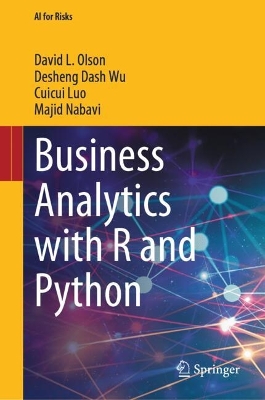AI for Risks
2 total works
This book is devoted to presenting models that have been applied in project management. There are a variety of project domains. We discuss engineering/construction projects, software development projects, massive projects to include governmental undertakings, and pharmaceutical product development. Chapter 1 gives an overview of projects, and discusses the difficulties in completing projects on time, within budget, and at designed functionality. While the successful completion of a project is a challenge, there are some things that can be done to improve the probability of a project’s success. The book reviews a number of project management concepts. These include developing organizational ability to work on projects, as discussed in Chapters 2 and 3. Sponsor expectations can be based on better information if a good job of project development, estimation and selection is conducted, as discussed in Chapters 4, 5 and 6. Project planning tools involving the critical path method are covered in Chapter 7. Tools to evaluate project risk are covered in Chapter 8. The critical chain method is covered in Chapter 9. Chapter 10 discusses means to rush projects when circumstances demand, to include project crashing as well as Agile and SCRUM approaches used in software engineering projects. Chapter 11 covers project implementation and control, including assessment of delay responsibility.
Business Analytics with R and Python
by David L Olson, Desheng Dash Wu, Cuicui Luo, and Majid Nabavi
This book provides an overview of data mining methods in the field of business. Business management faces challenges in serving customers in better ways, in identifying risks, and analyzing the impact of decisions. Of the three types of analytic tools, descriptive analytics focuses on what has happened and predictive analytics extends statistical and/or artificial intelligence to provide forecasting capability. Chapter 1 provides an overview of business management problems. Chapter 2 describes how analytics and knowledge management have been used to better cope with these problems. Chapter 3 describes initial data visualization tools. Chapter 4 describes association rules and software support. Chapter 5 describes cluster analysis with software demonstration. Chapter 6 discusses time series analysis with software demonstration. Chapter 7 describes predictive classification data mining tools. Applications of the context of management are presented in Chapter 8. Chapter 9 covers prescriptive modeling in business and applications of artificial intelligence.

